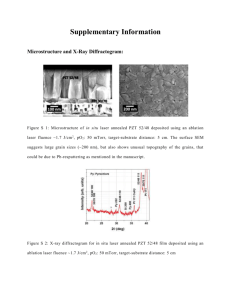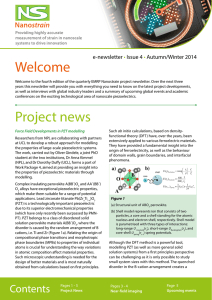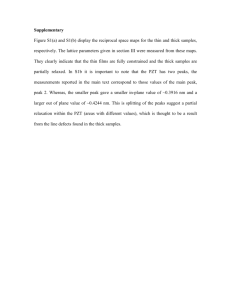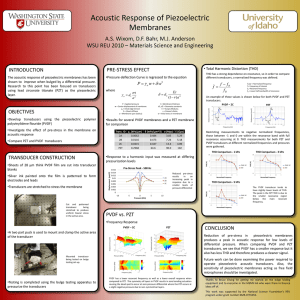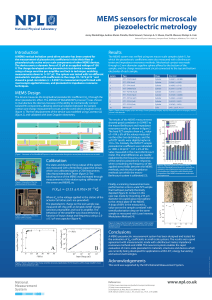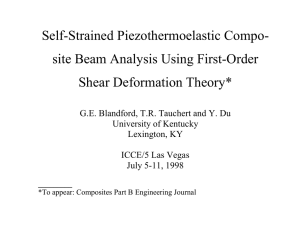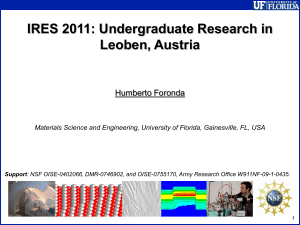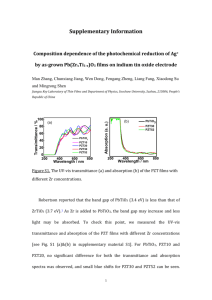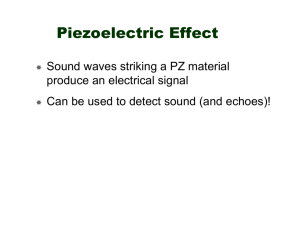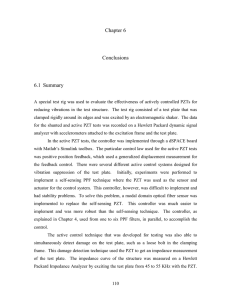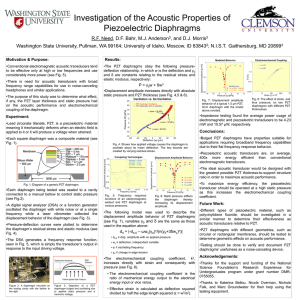Warsame Heban Section L01 Advisor: Linda Milor Group Name
advertisement
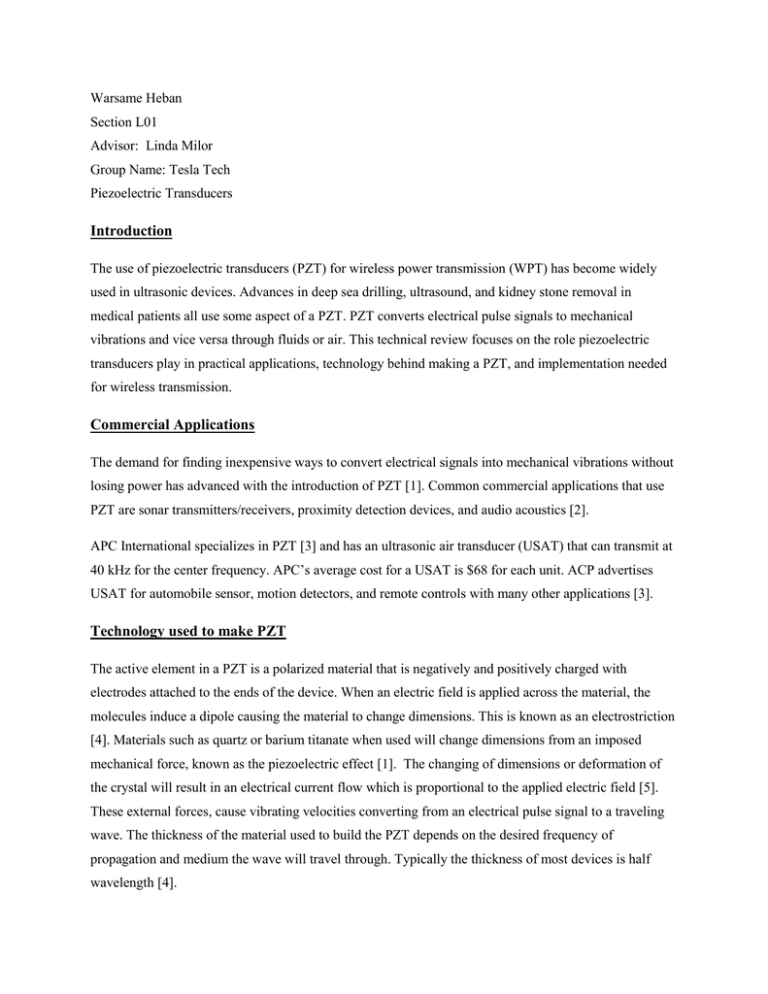
Warsame Heban Section L01 Advisor: Linda Milor Group Name: Tesla Tech Piezoelectric Transducers Introduction The use of piezoelectric transducers (PZT) for wireless power transmission (WPT) has become widely used in ultrasonic devices. Advances in deep sea drilling, ultrasound, and kidney stone removal in medical patients all use some aspect of a PZT. PZT converts electrical pulse signals to mechanical vibrations and vice versa through fluids or air. This technical review focuses on the role piezoelectric transducers play in practical applications, technology behind making a PZT, and implementation needed for wireless transmission. Commercial Applications The demand for finding inexpensive ways to convert electrical signals into mechanical vibrations without losing power has advanced with the introduction of PZT [1]. Common commercial applications that use PZT are sonar transmitters/receivers, proximity detection devices, and audio acoustics [2]. APC International specializes in PZT [3] and has an ultrasonic air transducer (USAT) that can transmit at 40 kHz for the center frequency. APC’s average cost for a USAT is $68 for each unit. ACP advertises USAT for automobile sensor, motion detectors, and remote controls with many other applications [3]. Technology used to make PZT The active element in a PZT is a polarized material that is negatively and positively charged with electrodes attached to the ends of the device. When an electric field is applied across the material, the molecules induce a dipole causing the material to change dimensions. This is known as an electrostriction [4]. Materials such as quartz or barium titanate when used will change dimensions from an imposed mechanical force, known as the piezoelectric effect [1]. The changing of dimensions or deformation of the crystal will result in an electrical current flow which is proportional to the applied electric field [5]. These external forces, cause vibrating velocities converting from an electrical pulse signal to a traveling wave. The thickness of the material used to build the PZT depends on the desired frequency of propagation and medium the wave will travel through. Typically the thickness of most devices is half wavelength [4]. Implementation of PZT From a block diagram approach for the implementation of the PZT, the characteristic thickness of the material must be defined in order to establish the resonance frequency. A closed loop feedback network is used to relate the input to the output for the electromechanical interaction of the transducer [2]. In proximity detection devices, a PZT takes an electrical signal and converts it into a traveling wave which is reflected off an object back to the transducer. Upon receiving the reflected wave, the PZT is able to determine the distance and location of the object based off the magnitude and incident of the reflected wave coming back to the PZT [3]. Most PZT can generate, receive, or do both with ultrasonic signals in air, water, and fluid media to determine the location of an object. The basic components needed for the implementation in a PZT can be made from a simple RCL circuit [6]. Upon the right configuration, the desire resonance frequency can be achieved and propagate an electrical signal to a traveling wave. References [1] Y. Shigeta. (2011, March). Development of Highly Efficient for Wireless Power Transducers Transmission System. IEEE Explorer. [Online]. Available: http://ieeexplore.ieee.org.www.library.gatech.edu:2048/stamp/stamp.jsp?tp=&arnumber=587711 5 [2] S. Wang. (2011, July). Dynamic Modeling of thickness-mode piezoelectric transducer using block diagram approach. Science Direct [Online]. Vol. 5. Available: http://www.sciencedirect.com.www.library.gatech.edu:2048/science/article/pii/S0041624X11000 047 [3] American Piezo Company., “Products,” [Online]. Avaliable: http://www.americanpiezo.com/standard-products/air-transducers/ultrasonic.html [4] Education Resources. Piezoelectric Transducers. [Online]. Available: http://www.ndted.org/EducationResources/CommunityCollege/Ultrasonics/EquipmentTrans/piezotransducers.ht m [5] K.W. Wang, “Adaptive Structural Systems with Piezoelectric Transducer”, Active-Passive Modal Damping Augmentation, pp. 4-5, Boston, MA 2008 http://portal.library.gatech.edu/vufind/Record/1037195 [6] D. J. Denen, “Proximity Detection Citcuit and Methods of Detecting Small Capacitance Changes,” U.S. Patent 68,388,87, 4 Jan. 2005.
